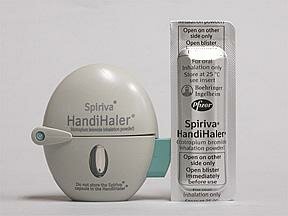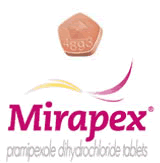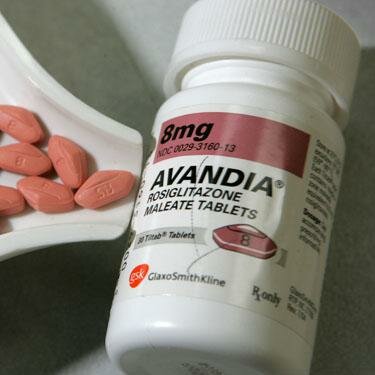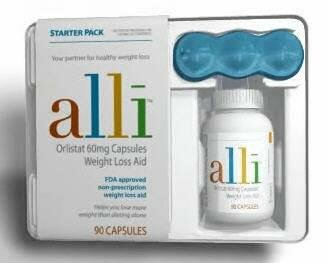Top 10 Bizarre Medical Disclaimers
Suggested by SMSAs litigation becomes a word that is firmly entrenched in the language of medical practice, the medical disclaimer can be the most important counsel of any treatment. In addition to providing sound advice, it also offers health professionals the confidence to exercise their skills responsibly without fear of unwarranted repercussions.
However, there is another less positive aspect to the presence of the medical disclaimer. Some medications and treatments carry with them extraordinary risks that should be made clear to any patient before taking them. In response to these risks, some disclaimers are odd, confusing and downright bizarre.
The following list of the top ten bizarre medical disclaimers, working toward the most bizarre, include honest warnings, unusual admissions and some of the most agile ducking and dodging that lawyers can construct.
10. BD Digital Thermometer
Although the information provided contains no prominently labeled disclaimer, the instruction manual for the BD Digital Thermometer offers an interesting recommendation regarding its use.
The thermometer can be used in a number of ways and some are more suitable to specific ages of patients. However, there are some drawbacks associated with some applications.
The most distasteful of these is probably the direction that, “Once used rectally, the thermometer should not be used orally.”
9. Handi-Haler
Some disclaimers are bizarre because of what they reveal about the product, others for what they say about the manufacturers, but the aspect of Handi-Haler’s disclaimer that strikes an odd chord is purely bureaucratic.
A Handi-Haler is a purpose designed plastic device that aids with the administering of tiotropium bromide inhalation powder. This medication is intended to assist in controlling symptoms of chronic obstructive pulmonary disease. A capsule of tiotropium bromide is placed in the Handi-Haler, which is then closed over it. By compressing part of the apparatus, the medication is dispersed in a powder form, hopefully into the mouth of the patient.
This is an ingenious piece of equipment that allows the patient to receive the full benefit of the tiotropium bromide. However, it is important to understand that the Handi-Haler is made of sound, good quality plastic that has undergone quality assurance inspection and testing.
Why then does the unit come with an expiration date? The capsules understandably have a date that must be recognized as that after which the medicine may have lost some of its effectiveness. But the plastic device doesn’t deteriorate in the same way. While it may weaken after countless repeated uses, as it waits in the box on the pharmacist’s shelf the Handi-Haler won’t “go bad or expire if it has not been used”.
The demand of bureaucracies to control the stock and stuff of the pharmacist has led to a ludicrous arrangement where patients could be discarding perfectly safe and valuable equipment for the sake of a random date stamped on a box.
8. Beijing Railway Administration
While it’s always unfair to underline the difficulties of language barriers, there are some disclaimers of a medical nature that have to raise eyebrows. The Beijing Railway Administration has set out health warnings for adventurers engaging in Plateau Travel.
In most instances the travel advice advertised are notable warnings; which discourage people with heart conditions and respiratory complaints from attempting the journey. The recommendation for those with diagnosed “plateau” related conditions to avoid the hike are perfectly reasonable.
However, the Beijing Railway Administration may have crossed a line when they advise that those suffering from hysteria and schizophrenia are not suitable to travel above 3000 meters. Similarly, “Diabetes out of control” is seen as a greater issue at these heights.
The final group of people, who could suffer as a result of the extreme height, are an unusual class, they are the “Highly dangerous pregnant women” who may wish to travel using the Beijing Railway. The thought of a pregnant woman being highly dangerous is almost comical, but perhaps it’s a hormone related matter in the thinner atmosphere.
7. Celebrex
As a widely prescribed and successfully used drug to treat arthritis, menstrual period pain and recovery issues following surgery, Celebrex is well-regarded and popular. With such a sound reputation, it is confusing that the disclaimer sounds more like a threat than a warning.
Patients are warned to not take Celebrex if they have severe heart or blood vessel disease affecting circulation in the brain or limbs, severe liver problems, kidney function concerns or a list of allergic reactions. They are also advised to ask their doctor if they have gastric bleeding, Irritable Bowel Disease, heart failure or if the package has exceeded its expiry date. These last four are listed identically, almost as if they are of equal importance.
Before taking the medication they should tell the prescribing practitioner of any history of diabetes, high blood pressure, high cholesterol, heart problems or stroke. They also need to inform the doctor of the level of consumption of other medication, the level of consumption of alcohol, smoking and if they have an infection of any kind.
While the manufacturers do not discourage patients becoming pregnant, they do point out that there is no information about the effect of Celebrex on pregnant women or their unborn child. On this basis, there is a cautious suggestion about avoiding Celebrex when pregnant unless the physician believes it essential.
The makers of Celebrex should be congratulated on the extent of their warning, but there is a genuine concern about the value of a disclaimer that covers so many possible nasty outcomes that there is little real indication of what side effects may be expected. Surprisingly, in the event of nuclear war, Celebrex will probably be safe to take.
6. MIT Medlinks
Not all medical disclaimers are about actual medications or procedures. The Students Promoting Health at MIT produced a chart of the recreational drugs, their effects and medical uses. The chart includes Sedatives, Stimulants, Narcotics, Psychedelics, Deliriants, Inhalants and others, touching on everything from Alcohol and Benzodiazepines to Cocaine, Ergolines and Scopolamine and Tryptamines.
The detail and clarity of the work can’t be questioned, but the disclaimer is a telling statement on the authors’ attitude to the substance abuse debate. It begins with “Do not misuse drugs. Do not use drugs for fun.”
This authoritarian approach is quickly countered by “Take drugs exactly as prescribed by a trustworthy doctor, and do not fear necessary prescription drugs because of the potencial terrible side effects on this chart.” It goes on to explain that “This chart provides a rough overview of some common recreational drugs.”
The authors then struck on the whole idea of the disclaimer and began to excuse the chart’s shortcomings, “This chart is an oversimplification, it has omissions, and it may have blatant inaccuracies due to ongoing scientific debate or the writer’s ignorance.”
But then the credibility of the chart may have been drawn into question and the authors didn’t want to appear uncool, so they added this important note, “All of these drugs are dangerous, but none of these drugs is The Devil in Powdered Form. Every one of these drugs has been used with no visible detrimental effect by some lucky people, but every one of these drugs could also destroy your life.”
Perhaps they were now confused themselves about the whole point of the exercise and so the disclaimer asks one final question, “Why would you take the risk?”
5. Veramyst
There is no doubting the thorough and complete information provided by the makers of Veramyst. With twenty-seven pages of details and warnings, the list of possible side effects is extensive.
These side effects include: thrush (candida), fungal infection of the mouth and throat, hole in the cartilage of the nose, slow wound healing, cataracts, immune system problems and adrenal insufficiency.
In children there is also a warning to be aware of delayed growth and pregnant women are advised that there is “no adequate and well-controlled study” relating to the side effects for them. They are advised to only use it if the “potential benefits justify the potential risk to the fetus”.
Impressively honest advice as the impact of seasonal allergies can be severe. But there is something unnerving in the thought that a mother can justify unnecessary risk to her fetus.
A further moment of honesty that throws a strange shadow over all the measured scientific and research based advice is the statement on the advertisement for Veramyst. Fading in, as a grateful young lady who is extolling the virtues of Veramyst fades out, is the statement that, “The way Veramyst works is not entirely understood”.
To paraphrase the Veramyst disclaimer, “We don’t know how it helps you and it might give you thrush, cataracts or just blow a hole in your nose, but if you’re game, good luck. Don’t say you weren’t warned.”
4. Ambien
The curse of insomnia can lead the sufferer to take desperate measures. These can include a number of remedies that lack any clinical support, but they can also involve the taking of medication specifically designed to help the patient achieve restful and satisfying sleep. Ambien is one such medication.
Described as a hypnotic, Ambien interacts with the chemicals in the brain and works as a sedative. Available in both immediate and slow-release configuration, the drug needs to be prescribed by a doctor who can monitor the side effects that may occur.
Probably to the glee of its manufacturers, Ambien can be a little too effective and the disclaimer, or “Warnings and Precautions” section, which is present in the literature would suggest that some care needs to be taken. This is because there has been evidence that some patients exhibit “complex behaviors” while taking a course of Ambien.
These behaviors include “sleep-driving” which is as scary as it sounds. The person actually drives a vehicle while not fully awake. In fact, they’re not awake enough to actually remember the driving part and can suffer amnesia of the entire event.
Other examples of such behavior are preparing and eating food while not fully awake, making phone calls in a similar state and even engaging in love making. Unfortunately, the disclaimer doesn’t make clear if these are all happening simultaneously. But then, it is hard enough to eat and drive at the same time while awake.
3. Mirapex
In discussing the effectiveness, oddity or disturbing nature of disclaimers, it must always be remembered that the drugs, such as Mirapex, that is prescribed to assist those suffering from Parkinson’s disease must be given some concession. However, as it is also prescribed to treat Restless Legs Syndrome the side effects listed in the form of warning or disclaimer can to be addressed in regard to this purpose.
Restless Legs Syndrome is described as a condition that presents unpleasant sensations in the legs creating an almost irresistible urge to move them. It is especially evident in periods of inactivity and can have a severely detrimental effect on the ability of the sufferer to gain satisfactory rest.
Mirapex has been found to be successful in dealing with these symptoms, although the sedative nature of the drug has been found to overdo the “rest” aspect of the problem. Within the “Important Safety Information” accompanying the medication is the warning that “Mirapex may cause you to fall asleep without warning during daily activities, including talking, eating and driving”.
This tendency to fall asleep could be a problem, but if warned, the patient could make arrangements to maintain their safety and dignity. However, should they discover unexpectedly that “When taking Mirapex, hallucinations may occur” and that problems, such as “gambling, compulsive eating, compulsive buying and increased sex drive”, have been experienced by some patients, there may be consequences that they weren’t expecting.
As a treatment for Restless Legs Syndrome, Mirapex may be wonderfully effective. However, it is worth weighing up the risk of becoming a broke, sex-fiend with a house full of unwanted purchases, who communicates with unicorns before falling peacefully asleep midway through your third pizza. At least your legs won’t spoil your rest.
2. Avandia
Type 2 Diabetes is the most common form of diabetes and occurs when the pancreas is able to produce some insulin, but not enough to satisfy the needs of the body. Genetic factors play a role in contracting this condition, but more and more regularly environmental factors are now having an impact on its prevalence.
Avandia is a thiazolidinedione that is prescribed for treatment of Type 2 Diabetes. The disclaimer for this medication, in the form of “Prescribing Information Document” runs for many pages and touches on the potential danger of Congestive Heart Failure and Myocardial Infarction and an increased incident of bone fractures in patients.
However, more unusual is the reference made to Ovulation. Avandia has the capacity to initiate ovulation in an-ovulatory women. An-ovulatory women are premenopausal and experience all processes of the menstrual cycle normally, but the egg does not descend, effectively making them infertile.
This drug has the potential to change that state. That is, these women who, for any of a range of reasons, do not ovulate doing their menstrual cycle can begin to do so without warning. In unsuspecting patience, this actually makes pregnancy a genuine side effect of using Avandia.
Furthermore, due to a lack of controlled and conclusive clinical trials, the disclaimer advises that use of Avandia be suspended during pregnancy. On this basis it follows that a side effect of taking Avandia is that you must stop taking Avandia … and congratulations on the baby.
1. Alli
Disclaimers are intended to alleviate fears, provide information and protect the manufacturer from litigation. They are also an opportunity for a company to excuse itself for some of the less positive things that can be associated with their product, such as, side effects or circumstances that might affect its performance.
But it is bizarre that a manufacturer simply give up on listing the side effects of a product. This seems to be the case with Alli, a non-prescription weight loss drug that is sold mostly in Europe and the United States of America. The disclaimer on the American website simply states that, “You’ve probably heard about the Alli side effects that some Alli users experience.”
Perhaps we haven’t, but the disclaimer assumes everyone has and simply explains that, “These bowel related changes (or GI-related effects) can happen”. Yet, rather than any details of what “can happen”, the Alli website points out that, “While you want to avoid Alli side effects, it’s even more important to learn how to avoid the behaviors that lead to them.”
So it was probably the consumer’s fault all along?
Rather than deflecting the issue of side effects, this tactic works well in actually arousing interest. To quench this thirst for detail, it’s best to visit the U.K. website. Here, there are categories of side effects including “Common”, “Very Common” and “Other Serious”. Respectively, the lists include, “Stomach pain, Incontinence (Stools) and Anxiety”, “Wind (flatulence), with or without oily spotting, sudden bowel motions and Fatty or Oily Stools” and “Bleeding from the back passage, Pancreatitis, Severe stomach pain caused by gallstones and Hepatitis.”
Is the American disclaimer really acknowledging the torrents of bad publicity the product has received? While it does make sense to clarify the directions for its effective use, the disclaimer’s surrender approach is understandable and a little helpful, even if not particularly informative.



















